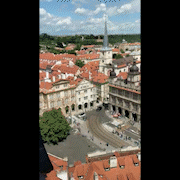Situated in west-central Germany, Hesse state borders the German states of (starting in the north and proceeding clockwise) Lower Saxony, Thuringia, Bavaria, Baden-Württemberg, Rhineland-Palatinate, and North Rhine-Westphalia.
Most of the population of Hesse is in the southern part in the Rhine Main Area. The principal cities of the area include Frankfurt am Main, Wiesbaden, Darmstadt, Offenbach, Hanau, Gießen, Wetzlar, and Limburg. Other major towns in Hesse are Fulda in the east, and Kassel and Marburg an der Lahn in the north. The densely populated Rhine-Main region is much better developed than the rural areas in the middle and northern parts of Hesse.
The most important rivers in Hesse are the Fulda and Eder Rivers in the north, the Lahn in the central part of Hesse, and the Main and Rhine in the south. The countryside is hilly and the numerous mountain ranges include the Rhön, the Westerwald, the Taunus, the Vogelsberg, the Knüll and the Spessart.
The Rhine borders Hesse on the southwest without running through the state, only one old arm – the so-called Alt-Rhein – runs through Hesse. The mountain range between the Main and the Neckar Rivers is called the Odenwald. The plain between the rivers Main, Rhine, and Neckar, and the Odenwald Mountains is called the Ried.
Hesse is the greenest state in Germany, as forest covers 42% of the state.














































